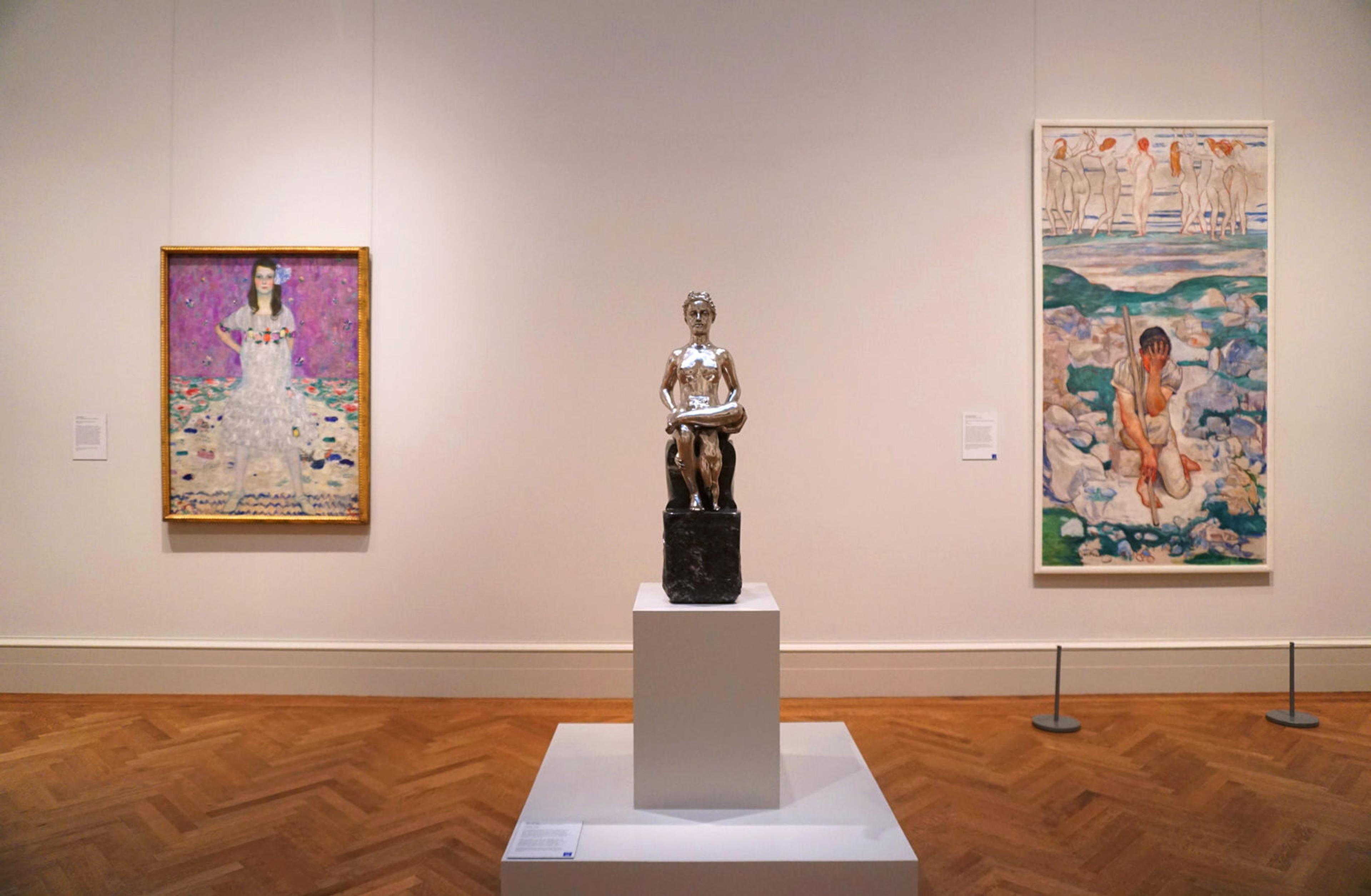A New Goddess in the Galleries: Max Klinger's Galatea

Max Klinger (German, 1857–1920). Galatea (three views), 1906. Cast silver; marble, confirmed field dimensions: 43 3/4 x 12 1/2 x 18 3/4 in. (111.1 x 31.8 x 47.6 cm). The Metropolitan Museum of Art, New York, Purchase, Bequest of Emma A. Sheafer, by exchange, Anonymous and Charles Hack and the Hearn Family Trust Gifts, and Gifts of Irwin Untermyer and Mrs. Robert M. Hillas, by exchange, 2018 (2018.25a, b)
We recently welcomed a major new acquisition in the galleries of nineteenth- and early twentieth-century European paintings and sculpture: a statue of the sea goddess Galatea, made in 1906 by the leading German artist Max Klinger. Acquired by the Department of European Sculpture and Decorative Arts (ESDA), it is a real statement piece: a nearly four-foot-tall woman, accompanied by a young boy, cast in polished silver, and seated on a marble throne. Assertive, beautiful, and gleaming, Galatea represents the archetypal union between body and mind, female and male, sexuality and the psyche. The Department of European Paintings collaborated with ESDA and the Department of Modern and Contemporary Art to install the work in gallery 829, alongside other German and Austrian masterpieces from the turn of the twentieth century.

View of Galatea as installed in gallery 829, between Gustav Klimt's Mäda Primavesi and Ferdinand Hodler's The Dream of the Shepherd (Der Traum des Hirten)
With the arrival of Galatea, the gallery takes on a definitively new character. Five years ago, this space displayed an almost completely different set of paintings, including works by British and French artists. Since then, we have rededicated the gallery to modernism in Central and Northern Europe, anchored by iconic works by key artists of the period. This process has been gradual, proceeding artwork by artwork, and has involved purchases (Ferdinand Hodler's The Dream of the Shepherd [Der Traum des Hirten] in 2013); gifts (George Minne's Three Holy Women at the Tomb in 2018); and long-term loans from private collections (such as Vilhelm Hammershøi's Self-Portrait and Edvard Munch's Cypress in Moonlight).

Left: Gustav Klimt's Serena Pulitzer Lederer and Vilhelm Hammershøi's Self-Portrait flank one of the gallery's doorways. Right: George Minne's Three Holy Women at the Tomb complements Arnold Böcklin's Island of the Dead
These additions complement artworks that the Museum has owned for decades, such as our wonderful Klimt portraits of Mäda Primavesi and Serena Pulitzer Lederer, acquired in 1964 and 1980, respectively. The transformation of the gallery reflects our constant goal of broadening the stories that we tell—in this case, the roots of modernity outside of France.
As the collection continues to grow and change, it has sometimes been challenging to create the right relationships among the works in the gallery—a hang that is both visually harmonious and historically meaningful. With the addition of Galatea, the gallery has settled into a new configuration that truly begins to give a sense of the artistic trends that shaped the era. In particular, we highlight Symbolism, which sought to evoke the realms of the imagination, the spirit, and the unconscious; and the Secession, which brought an innovative and independent spirit to German and Austrian art and design. (Max Klinger, naturally, played a vital role in both movements.) But this area of the collection is still evolving: we will continue to explore and expand it, and our galleries will change again as the collection grows—so be sure to watch this space!
Related Content
Read essays related to Klinger and the Symbolist movement on the Heilbrunn Timeline of Art History: "The Graphic Art of Max Klinger"; "Symbolism."
What's going on in The Met's Old Master galleries? View the web feature Met Masterpieces in a New Light to learn about the European Paintings Skylights Project, in which the skylights that admit natural overhead light into the galleries for optimal viewing of the collection will be replaced, in order to update and improve the quality of light in the galleries and resolve basic maintenance issues.
Alison Hokanson
Alison Hokanson is an assistant curator in the Department of European Paintings at The Met.